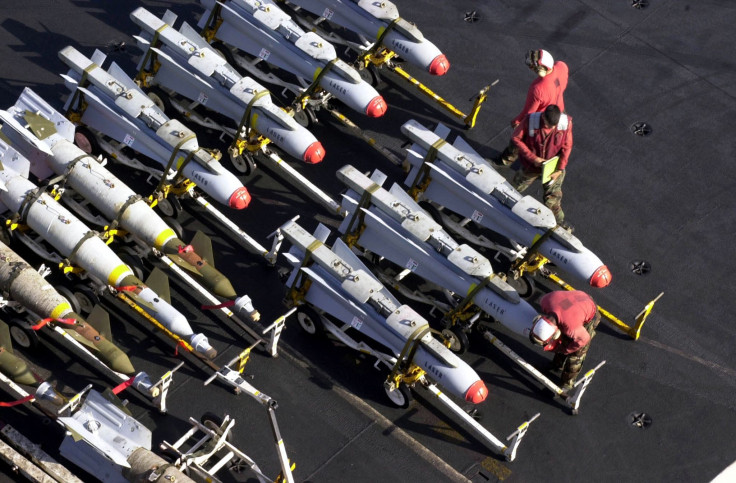US Navy Deploys Powerful Radar-Evading Naval Strike Missile In Pacific With Eye On China
The new missile system could change the tide in the disputed territories in the South China sea.

As tensions rise in the Pacific, a discreet United States Navy warship is carrying a new weapon that could tilt the apportionment of power in the South China sea. The USS Gabrielle Giffords is heading to an unknown location, possibly to test what analysts say a weapon that could change the tides in favor of the US.
The sleek low-profile, littoral combat ship left San Diego earlier this month carrying the US Navy's new Naval Strike Missile. The weapon was developed by Raytheon, a defense contractor company that has produced high-tech weapons in the past.
According to the company, the Naval Strike Missile is a sea-skimming cruise missile that is tough to spot on radar. Moreover, the new tech could allegedly outmaneuver enemy defenses and is guided by an independent MQ-8B Fire Scout helicopter drone.
A spokesperson for the US Navy's 3rd Fleet, Commodore John Fage said that the new missile would increase the striking power of the United States Navy. Senior defense analyst Timothy Heath appended that the Naval Strike Missile "has a better chance of fighting and surviving" at the disputed territories in the South China sea.
China and the US are in the middle of a territorial stand-off as both countries are aiming to control one of the busiest naval regions in the world. Since 2015, Beijing has pressured neighboring countries through the militarization of reclaimed areas across the Asian archipelago.
China's so-called nine-dash line is undoubtedly expansive, covering the majority of the area claimed by the Philippines, Brunei, Malaysia and Vietnam. On 12 July 2016, the Permanent Court of Arbitration sided in favor of the Philippines based on the United Nations Convention on Law of the Sea (UNCLOS).
But the People's Republic of China has repeatedly said that they will not honor the ruling. The Chinese government even claimed that they would not move an inch despite international appeals to tone down their rhetoric.
In their argument, Chinese defense minister Wei Fenghe declared that "In the face of heavily armed ships and military aircraft, how can we not build defense facilities?"
The US countered by sending its fleet on the troubled waters, responding to its allies' calls. There have been several close calls that luckily did not escalate into a full-time naval exchange.
The Gabrielle Giffords is the first Littoral ship that has been deployed with the Naval Strike Missiles. The US plans to arm more than 30 vessels in the growing LCS fleet as told by Navy officials earlier this year at a Senate Armed Services hearing.
The new projectile reportedly has an effective range of 100 miles (160 kilometers), 30 percent farther than the current Harpoon missiles equipped by the US Navy. Its ability to work with the helicopter drone enables its fleet to target outside of the radar's effective range.
Former US Navy captain, Carl Schuster believes that the drone would give the Navy "eyes over the horizon." He added that the targeting capability is as essential, "you can only hit what you can find," quipped the retired officer.
The addition of the new missile will undoubtedly send a message to Beijing, but could also aggravate the tense situation.
© Copyright IBTimes 2025. All rights reserved.





















